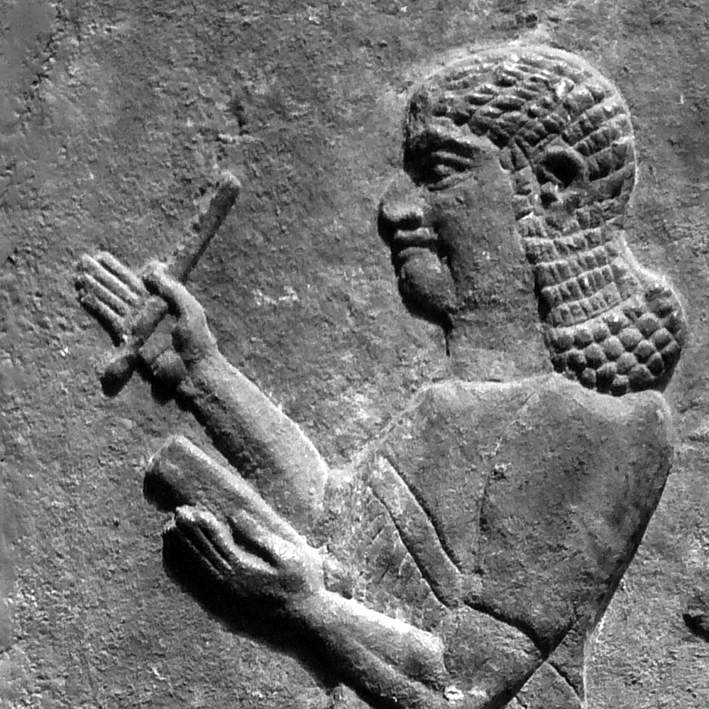
trilingual inscription at the site of Bisitun Pass in Iran. One important early key to deciphering the script proved to be the discovery of a kind of cuneiform Rosetta Stone, a circa 500 B.C. It wasn’t until the early nineteenth century, when archaeologists first began to excavate the tablets, that scholars could begin to attempt to understand these texts.

The script-not itself a language-was used by scribes of multiple cultures over that time to write a number of languages other than Sumerian, most notably Akkadian, a Semitic language that was the lingua franca of the Assyrian and Babylonian Empires.Īfter cuneiform was replaced by alphabetic writing sometime after the first century A.D., the hundreds of thousands of clay tablets and other inscribed objects went unread for nearly 2,000 years. Cuneiform as a robust writing tradition endured 3,000 years. Different combinations of these marks represented syllables, which could in turn be put together to form words. Later scribes would chisel cuneiform into a variety of stone objects as well. by Sumerian scribes in the ancient city-state of Uruk, in present-day Iraq, as a means of recording transactions, cuneiform writing was created by using a reed stylus to make wedge-shaped indentations in clay tablets. While most tablets were, in fact, used for mundane bookkeeping or scribal exercises, some of them bear inscriptions that offer unexpected insights into the minute details of and momentous events in the lives of ancient Mesopotamians.įirst developed around 3200 B.C. It implicitly challenged the perception that cuneiform tablets were used merely for basic accounting, such as tallying grain, rather than for complex astronomical calculations. Judging by the story’s enthusiastic reception on social media, this discovery captured the public imagination. But here was proof that nearly 2,000 years earlier, ancient people were every bit as advanced as Renaissance-era scholars. 1400 that these techniques were first employed-by English and French mathematicians. Scholars had assumed it wasn’t until almost A.D. The wedge-shaped writing on the tablets, known as cuneiform, demonstrated that these ancient stargazers used geometric calculations to predict the motion of Jupiter.

American Journal of Archaeology 107(2):233-255.In early 2016, hundreds of media outlets around the world reported that a set of recently deciphered ancient clay tablets revealed that Babylonian astronomers were more sophisticated than previously believed. The location of Alashiya: New evidence from petrographic investigation of Alashiyan Tablets. Goren Y, Bunimovitz S, Finkelstein I, and Nadav Na.Journal of Near Eastern Studies 29(1):48-51. The Position of the Intellectual in Mesopotamian Society. History of Education Quarterly 19(3): 305-32.

The Scribal Tablet-House in Ancient Mesopotamia. The Accounting Historians Journal 11(1): 83-101. The significance of ancient Mesopotamia in accounting history. "BA" Portrait: Sir Henry Creswicke Rawlinson: Pioneer Cuneiformist. Cuneiform Digital Library Journal 2011(001). The earliest contributions to the decipherment of Sumerian and Akkadian. By the end of the 1850s together these men were able to read cuneiform. Finally, Hincks and Rawlinson worked on another important cuneiform document, the Black Obelisk, a Neo-Assyrian black limestone bas-relief from Nimrud (today in the British Museum) referring to the deeds and military conquests of Shalmaneser III (858-824 BC).Old Persian had already been deciphered when Rawlinson climbed the cliff, allowing him to translate the other languages. This inscription was from the Persian king Darius I (522-486 BC) who had the same text bragging about his exploits inscribed in cuneiform in three different languages (Akkadian, Elamite, and Old Persian). The most important step was when Henry Creswicke Rawlinson scaled the steep limestone cliff above the Royal Road of the Achaemenids in Persia to copy the Behistun inscription.The Anglo-Irish clergyman Edward Hincks worked on translations during this period. Next came philologist Georg Grotefend, who deciphered but didn't claim to translate the Old Persian cuneiform scripts.In his book Travels Through Arabia, published in 1792, Niebuhr describes a visit to Persepolis where he made copies of the cuneiform inscriptions. Only the cartographer Carsten Niebuhr survived. The Royal Danish Arabia Expedition (1761-1767) was comprised of a natural historian, a philologist, a doctor, a painter, a cartographer, and an orderly. The Danish king Frederik V (1746-1766) sent six men to the Arab world to answer scientific and natural history questions and learn the customs.


 0 kommentar(er)
0 kommentar(er)
